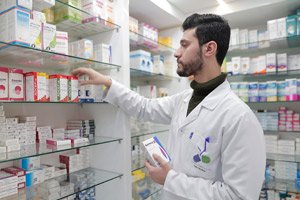
All iLive content is medically reviewed or fact checked to ensure as much factual accuracy as possible.
We have strict sourcing guidelines and only link to reputable media sites, academic research institutions and, whenever possible, medically peer reviewed studies. Note that the numbers in parentheses ([1], [2], etc.) are clickable links to these studies.
If you feel that any of our content is inaccurate, out-of-date, or otherwise questionable, please select it and press Ctrl + Enter.
Risk perception and antibiotic resistance: from knowledge to action
Last reviewed: 02.07.2025
 ">
">Antibiotic resistance (AMR) is one of the most serious health threats of our time. With the rise of drug-resistant microorganisms, we risk losing the ability to effectively treat even common infections. Although the problem is clear, it requires innovative approaches, especially in the field of education.
A recent cross-sectional study of 4,265 pharmacy students from seven Middle Eastern countries (Egypt, Jordan, Saudi Arabia, Lebanon, UAE, Qatar and Kuwait) provides important data on how future pharmacists understand the problem of antibiotic resistance. The results are published in the journal Medicine.
Encouraging knowledge
The average level of knowledge of students was 71.4% (5 out of 7 points). The highest results were shown by students in the 4th and 5th years of the Bachelor's degree programs in Pharmacy, which emphasizes the importance of formal education and practical training.
Pharmacists play a key role in the rational use of antibiotics by educating patients, preventing misuse and ensuring correct prescribing. However, despite a relatively high level of knowledge, the study found significant gaps in the practical application of this knowledge.
Attitude and behavior
More than 89% of students recognise the threat posed by antibiotic resistance, and more than 93% emphasised the need to raise awareness about the correct use of antibiotics. Many also expressed support for strict regulation of antibiotic use in industries such as meat and dairy production.
However, there are discrepancies in real practice: 51.7% of respondents admitted to using antibiotics to treat fever, which is often inappropriate. This highlights the need for targeted educational initiatives that will help transform theoretical knowledge into everyday habits.
The role of risk perception
An important aspect is risk perception. Many students may underestimate the personal consequences of antibiotic misuse, leading to practices such as self-medication. Incorporating the concept of risk perception into educational programs can significantly improve this situation. For example, role-playing scenarios, case studies, and visualization of antibiotic resistance trends can help students understand the risks to both themselves and their patients.
Regional differences
The study’s findings highlight the influence of local cultural norms and health systems on antibiotic use. For example, in Egypt, students scored highest on knowledge, which may be related to the emphasis on AMR in the curriculum. In countries with stricter laws on the sale of antibiotics, self-medication rates among students were lower, confirming the importance of policy in shaping behaviour.
Call to Action
The study shows that pharmacists of the future have a good knowledge base, but there are gaps in practice that need to be addressed. Investment is needed in education that focuses on practical application of knowledge and engagement with communities to promote responsible antibiotic use.
Training the next generation of pharmacists is key to defeating antibiotic resistance. The question is, are we doing enough to train them? The answer to this question will determine the success of our fight and the health of future generations.
